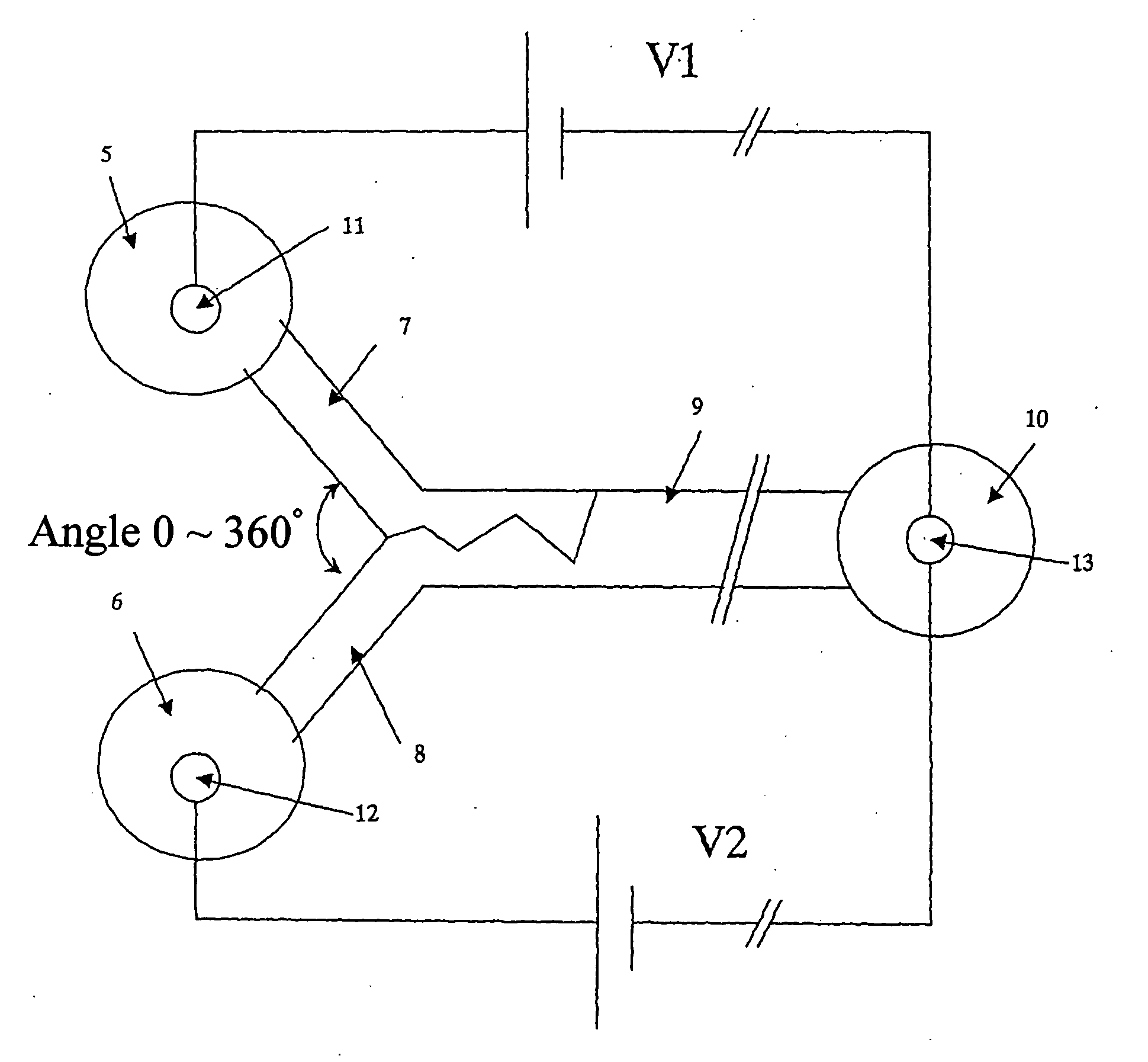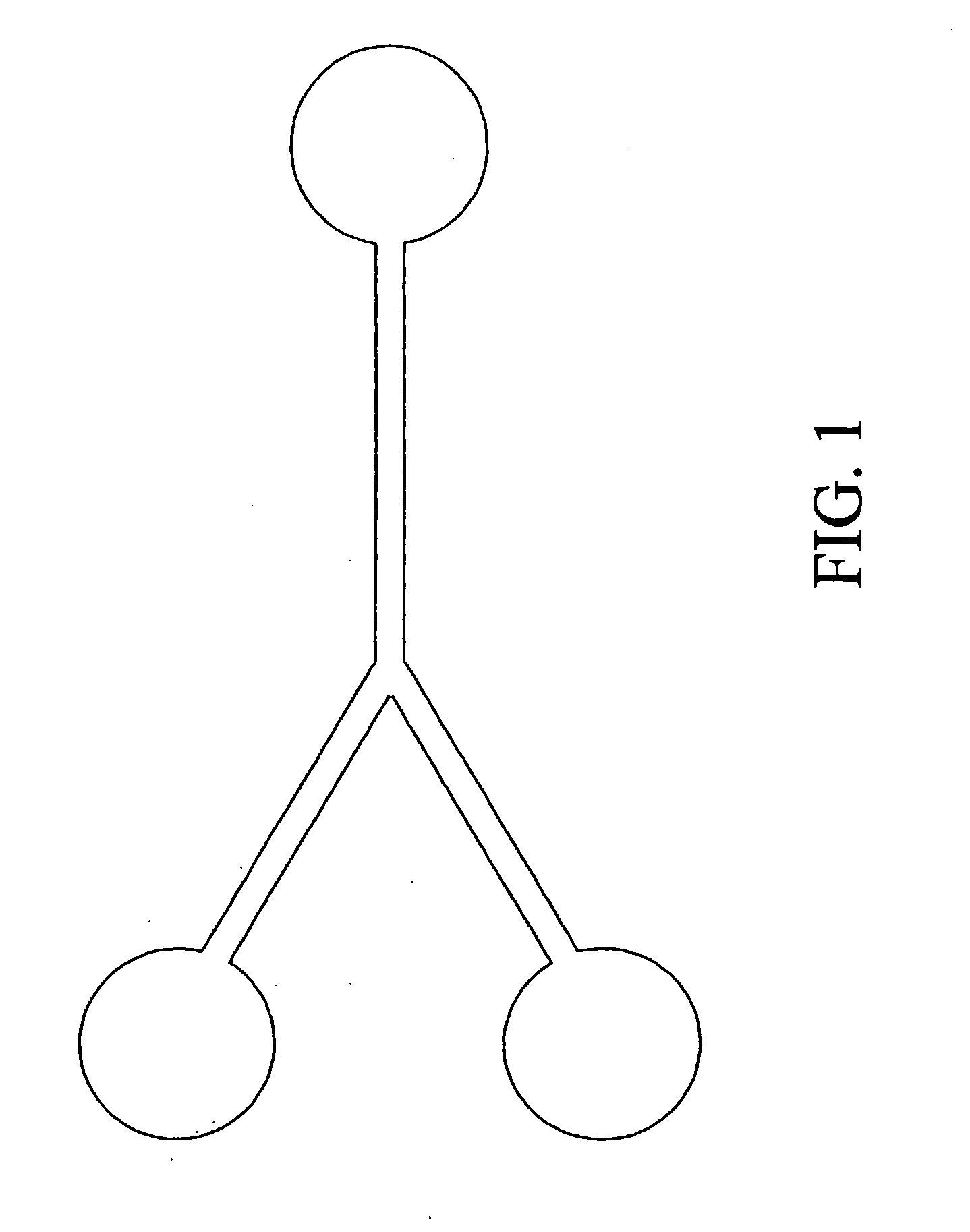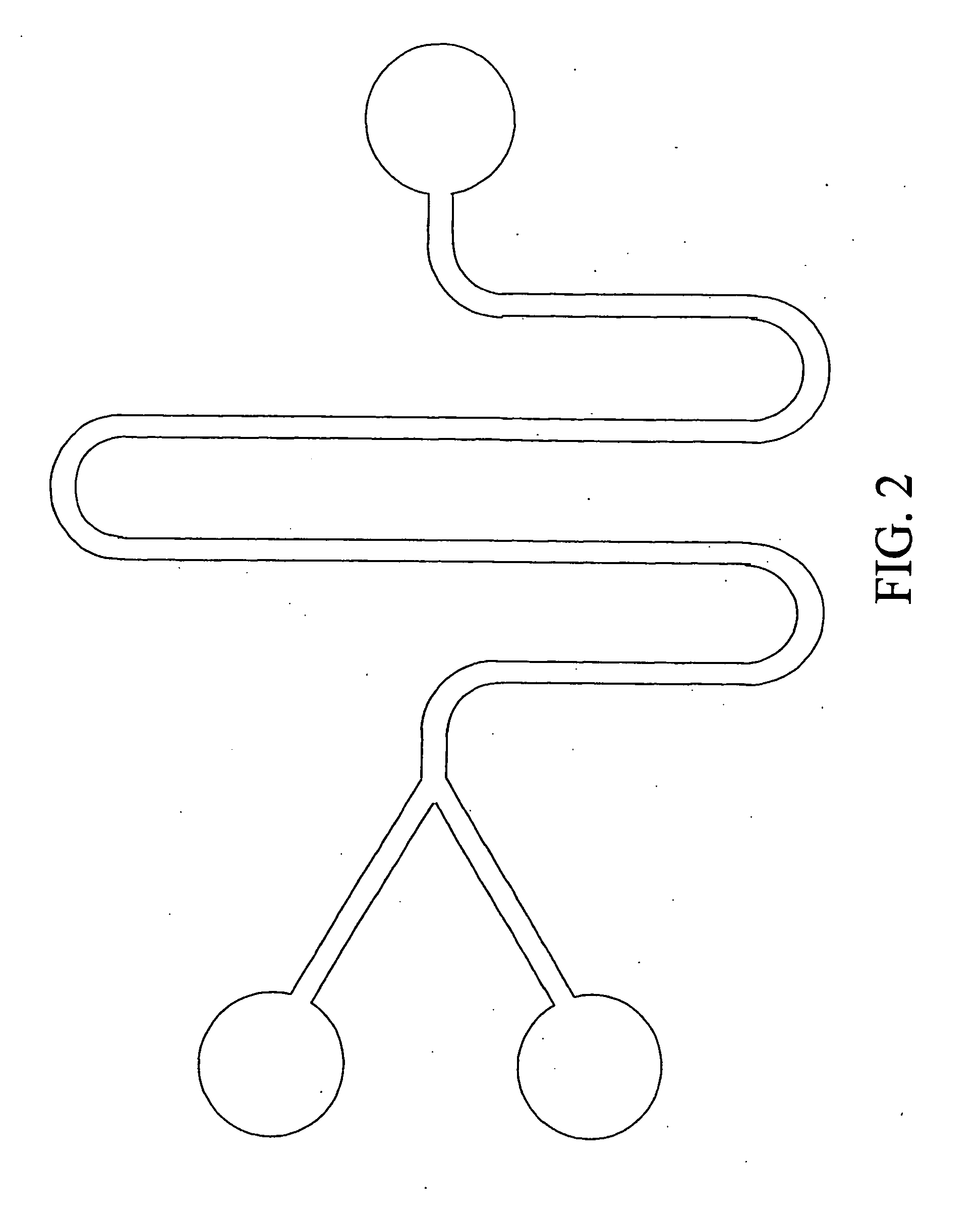Microfluidic treatment method and device
a microfluidic treatment and microfluidic technology, applied in the direction of flow mixers, diaphragms, electrolysis, etc., can solve the problems of affecting the simplification of experimental procedures, affecting the simplification of the experimental procedure, so as to achieve the effect of easy compilation into the database and free control of the concentration gradien
- Summary
- Abstract
- Description
- Claims
- Application Information
AI Technical Summary
Benefits of technology
Problems solved by technology
Method used
Image
Examples
embodiment
A Concerning DGGE
[0328] In embodiment A, a denaturing gradient is formed so as to be continuously changed in the direction of electrophoresis.
[0329] The microchip electrophoretic apparatus of the present embodiment comprises at least two liquid-introducing microchannels for introducing buffer solutions containing a denaturant at different concentrations; and a mixing microchannel to which the at least two liquid-introducing microchannels connect, and a concentration gradient region of the denaturant is formed by the convergence, in the mixing microchannel, of the buffer solutions introduced at varying ratios from the liquid-introducing microchannels.
[0330] A preferred embodiment has a mixing enhancing means for enhancing the mixing of the buffer solutions converging in the mixing microchannel. As this mixing enhancing means, each of the aforementioned embodiments 1-1 to 2-3, and any combination of these embodiments can be applied.
Microchip Electrophoretic Apparatus of the Embodi...
embodiment b concerned
with DGGE
[0367] The DGGE method of the embodiment B comprises arranging buffer solution zones (electrophoretic gel) containing a denaturant at different concentrations alternately in the direction of electrophoresis, and introducing an analyte into the resulting gradient region for electrophoresis.
[0368] In the microchip electrophoretic apparatus of the embodiment B, buffer solution zones containing a denaturant at different concentrations are arranged alternately in a microchannel in the direction of electrophoresis, and an analyte is introduced into the resulting gradient region for electrophoresis.
(1) Principle of the Present Embodiment
[0369] A method for separating double-stranded nucleic acids by the embodiment B is characterized by arranging at least two buffer solution zones containing a denaturant at different concentrations alternately in the direction of electrophoresis of the nucleic acids. The nucleic acids are electrophoretically moved in a discontinuous arrangement...
example 1
[0441] Two double-stranded nucleic acids having different base sequences were separated by use of a microchip electrophoretic apparatus as described in each of the aforementioned embodiments. A nucleic acid sample containing a V3 region of 16S rRNA gene obtained from two microorganisms of the genus Sphingomonas was prepared as an analyte.
[0442] In experiments, the two microorganisms were cultured in liquid media, and then collected by centrifugation. The cells were mixed, and nucleic acids were extracted from the mixed cells by using benzyl chloride. The extracted nucleic acids were subjected to PCR using universal primers (forward; 5′-CGCCCGCCGC GCGCGGCGGG CGGGGCGGGG GCACGGGGGG CCTACGGGAG GCAGCAG-3′ (sequence No. 1), reverse; 5′-ATTACCGCGG CTGCTGG-3′ (sequence No. 2)) targeting the V3 region of the 16S rRNA gene. The resulting PCR product was used as a final nucleic acid sample. The universal primers used were FITC-labeled at the 5′-terminal. The forward primer was provided with a...
PUM
| Property | Measurement | Unit |
|---|---|---|
| size | aaaaa | aaaaa |
| size | aaaaa | aaaaa |
| depth | aaaaa | aaaaa |
Abstract
Description
Claims
Application Information
 Login to View More
Login to View More - R&D
- Intellectual Property
- Life Sciences
- Materials
- Tech Scout
- Unparalleled Data Quality
- Higher Quality Content
- 60% Fewer Hallucinations
Browse by: Latest US Patents, China's latest patents, Technical Efficacy Thesaurus, Application Domain, Technology Topic, Popular Technical Reports.
© 2025 PatSnap. All rights reserved.Legal|Privacy policy|Modern Slavery Act Transparency Statement|Sitemap|About US| Contact US: help@patsnap.com



